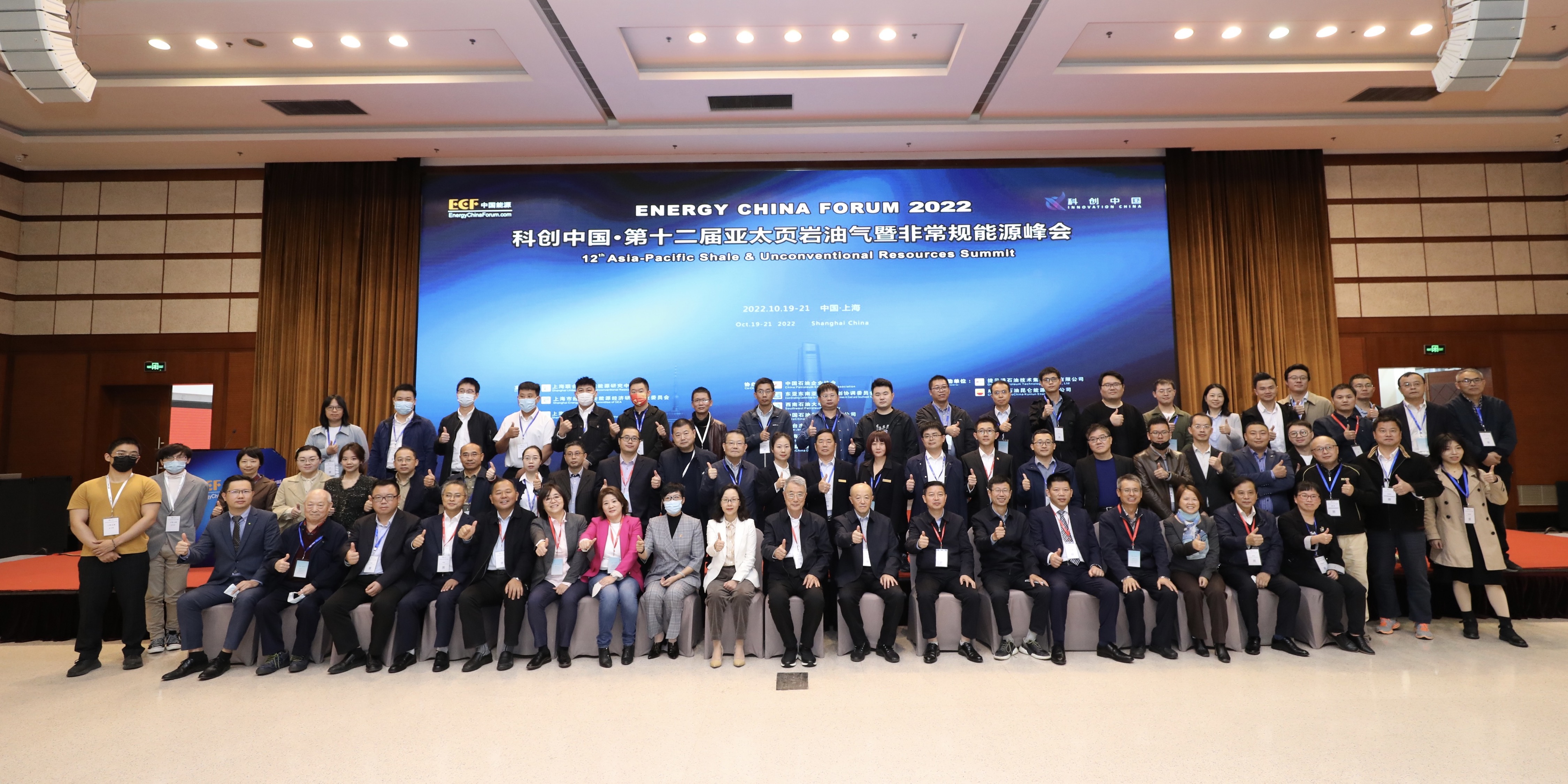China Mineral Resources 2021
Oil and gas survey and evaluation
New progress was made in the survey of shale oil and gas in continental facies in the Songliao Basin. The Jili-1# shale oil well in the Lishu graben in the southern part of the Songliao Basin obtained for the first time a high-yield industrial flow of 76,000 cubic meters per day in the shale strata of the Shahezi Formation, making a breakthrough in the investigation of continental shale gas in the graben Lake Basin; the Song Shale Oil-3# well in the Sanzhao Depression in the northern part of the Songliao Basin obtained a daily industrial oil flow of 3.46 cubic meters per day, making a breakthrough in strategic investigation of new shale oil zones in normal pressure, medium to low heat evolved mud shale reservoirs.
New progress was also seen in the geological survey of shale gas in the Anhui region along the downstream of the Yangtze River Economic Zone, the middle Hunan region along the midstream, and Daguan, Yunnan and Danzhai, Guizhou along the upstream. The two-layer gas testing by hydrofracture in the Silurian system of the Xinsudi 1# well on the northwest edge of the Tarim Basin yielded 16,800 and 12,600 cubic meters of industrial gas flow per day, opening up a new formation of oil and gas exploration in the Silurian system of northwest Tarim.
The coal-bed methane survey has achieved an important breakthrough in industrial gas flow from the Heijidi 4# well, Heijidi 3# well and Heijidi 1# well, which were deployed in the coal mining area and mined-out area of the Jixi Basin and deep peripheral layers. It effectively serves efficient control of mine gas and comprehensive utilization of coalbed methane resources, and opens up a new field of exploration and development of unconventional oil and gas resources dominated by coal measure gas.
Mineral Resources
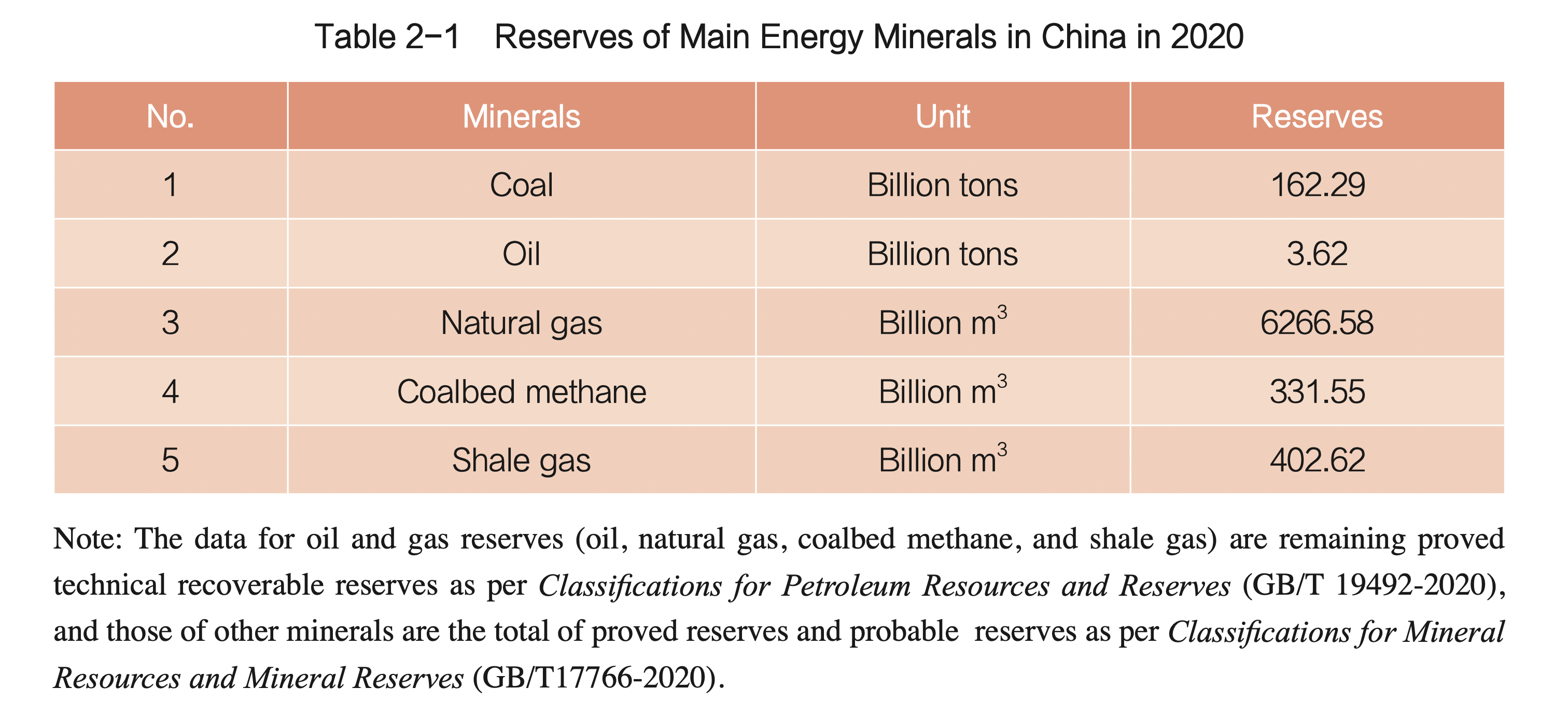
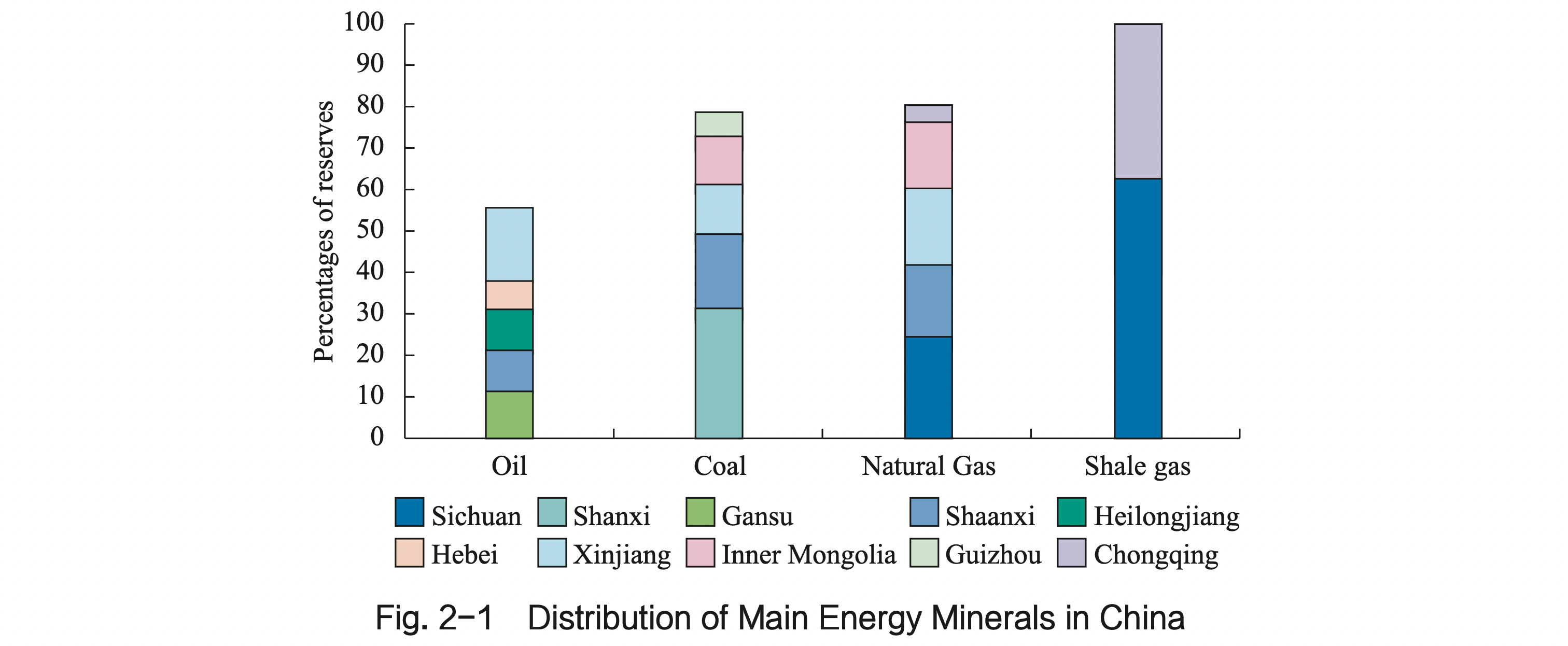
Exploration
In 2020, the investments in geological exploration were RMB 87.19 billion in China, a decrease of 12.2% compared with the previous year. Among them, the investments in geological exploration of oil and gas were RMB 71.02 billion, decreased by 13.5%. The investments in geological exploration of non-oil & gas mineral resources were RMB 16.16 billion, decreased by 6.1%, and the decline was aggravated compared with 2019 (Fig. 3-1).
2,956 wells were drilled for oil and gas exploration and the drilling footage reached 8,394.2 kilometers, increased by 2.1% and 2.9% respectively. A total of 30,000 kilometers 2D seismic data was acquired, decreased by 41.6%; and a total of 42,700 square kilometers 3D seismic data was acquired, decreased by 9.3%.
Among the investments in non-oil & gas geological exploration, the investments in mineral exploration was RMB 8.25 billion, decreased by 6.3% and accounting for 51.0% of the total; the investments in basic geological survey was RMB 1.99 billion, decreased by 22.3% and accounting for 12.3% of the total; the investments in hydrogeology, environmental geology and geological disaster survey and evaluation was RMB 3.45 billion, decreased by 0.3% and accounting for 21.4% of the total; the investments in geological science and technology and comprehensive research was RMB 2.20 billion, increased by 11.3% and accounting for 13.6% of the total; the investments in geological data service and digitalization was RMB 0.27 billion, decreased by 33.1% and accounting for 1.7% of the total. See Fig. 3-2 for the proportion of each investment.
Among the investments in non-oil & gas geological exploration, the nationwide fiscal investments reached RMB 11.01 billion, accounting for 68.1% of the national total, including RMB 4.63 billion that was financed by the central government, decreased by 26.8% and accounting for 28.6% of the national total, and RMB 6.39 billion that was financed by local governments, increased by 20.4%, accounting for 39.5% of the national total. RMB 5.15 billion was from social investment, decreased by 7.8% and accounting for 31.9% of the national total. See Fig.3-3 for the proportion of the investment sources.
The investments in non-oil & gas mineral exploration were dominated by minerals such as coal, gold, lead-zinc and copper, totally accounting for 51.7% of total investments in non-oil & gas exploration in China. Compared to 2019, the investments in silver, lead-zinc, nickel, graphite and tungsten dropped significantly (Table 3-1).
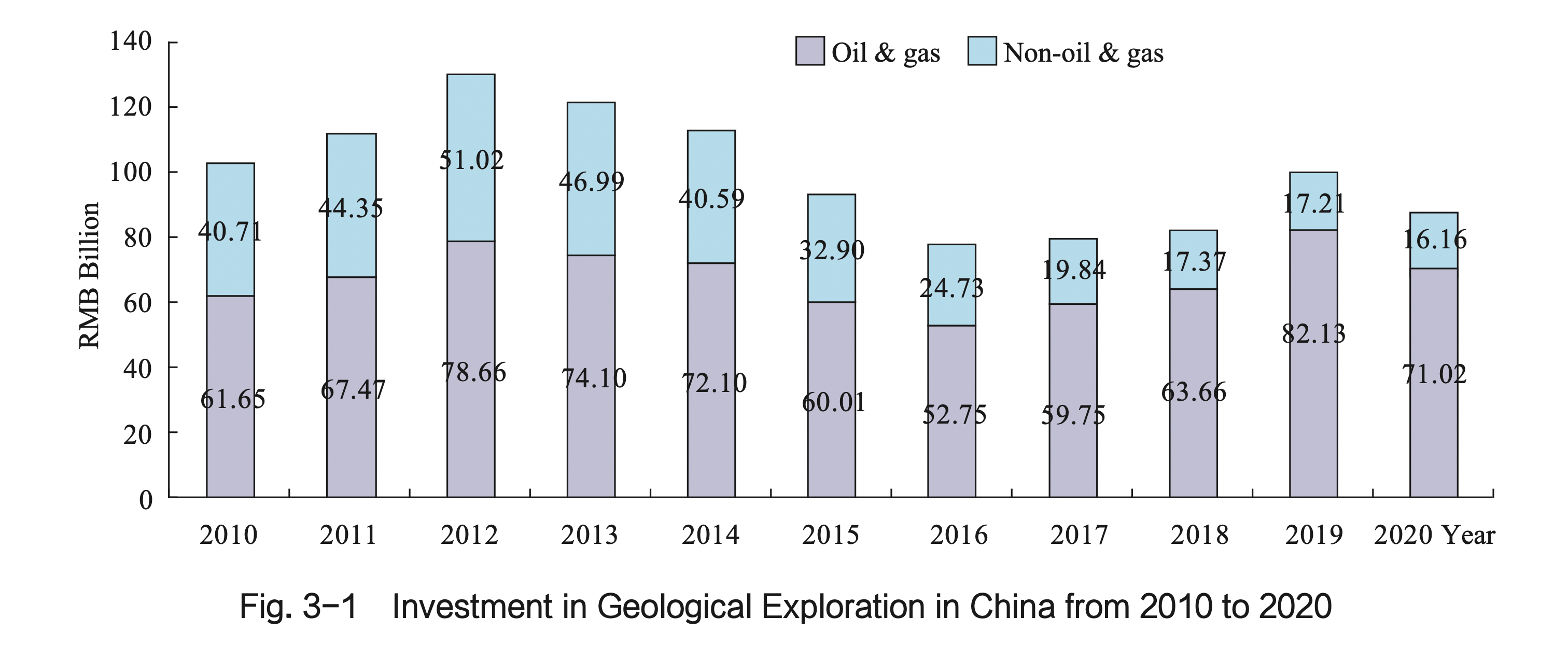
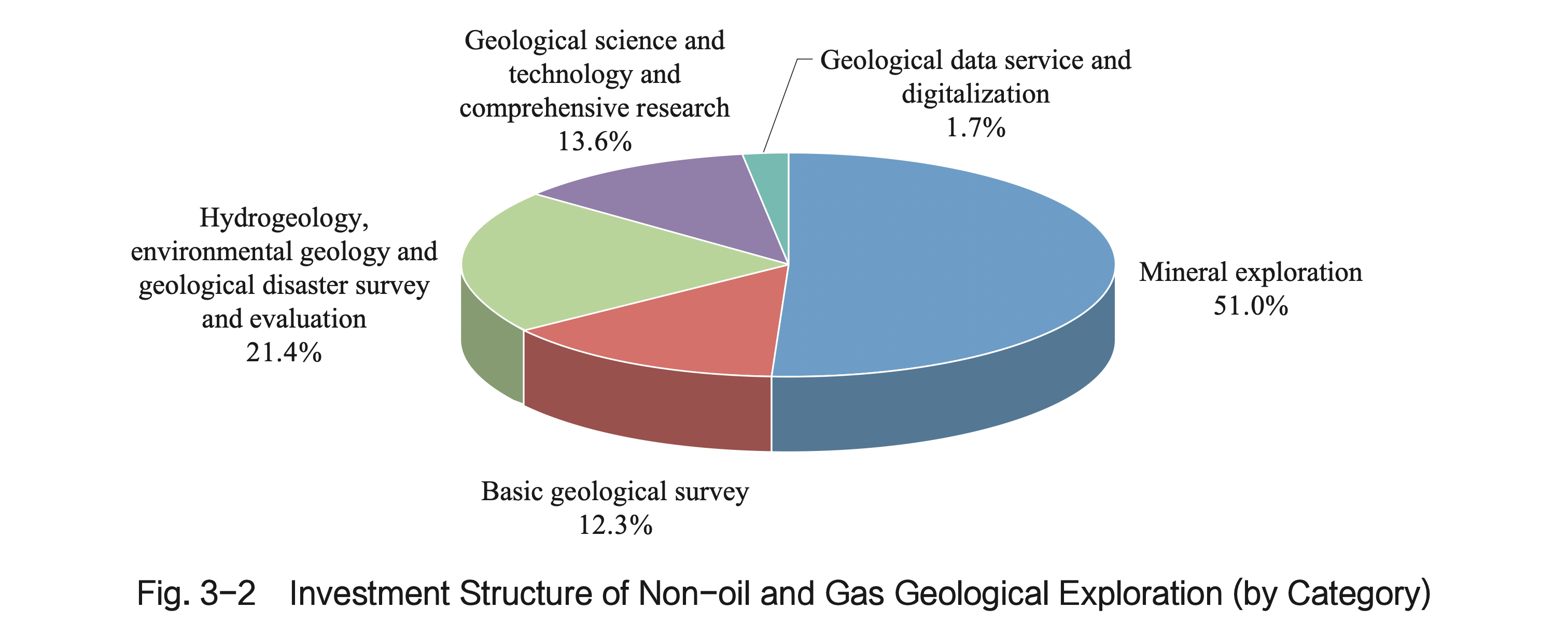
In 2020, the provincial funds invested in geological exploration reached RMB 2.98 billion, including RMB 2.25 billion in mineral exploration, which accounts for 27.3% of the total national investments in non-oil & gas mineral exploration (RMB 8.25 billion) and 51.6% of the national fiscal investments in non-oil & gas mineral exploration (RMB 4.36 billion). 439 mineral exploration projects were implemented, and coal, gold, geothermal water, copper and bauxite taking up the largest shares of investment in a descending order.
Progress in Oil and Gas Exploration
New discoveries were made in new areas and new strata in conventional oil and gas exploration, and major breakthroughs were made in exploration of shale gas and other unconventional oil and gas exploration.
1. Conventional oil and gas exploration
Major breakthroughs were made in ultra-deep oil exploration in the Tarim Basin. In well LE-1# (drilling depth to 8,882 meters), high-yield oil and gas flows were found at the depth of 8,200 meters with output of 134 tons of oil and 45,900 cubic meters of natural gas per day. In well MD-1#, high-yield oil and gas flows were found at the depth of 7,600 meters with output of 624 tons of oil and 370,000 cubic meters per day. Geological reserves of over 100 million tons were identified in the Fuman block. Major breakthroughs were made in ultra-deep wells such as Shunbei 57X and Shunbei 71X.
Well KE-1#, a venture exploration well in Fukang Sag of Junggar Basin, has made a major breakthrough, and it is expected to form an oil area with a scale of more than 500 million tons in the eastern part of the basin; well HE-1#, a deep and large structural wild cat well in the middle section of the southern margin of the basin, has obtained high-yield oil and gas flow in Qingshuihe Formation.
Breakthroughs were made in natural gas exploration for the Sinian-Cambrian systems at well PE-1# and well JE-1# on the north slope of the Middle Sichuan Uplift in the Sichuan Basin. Wild cat well Pingqiao - 1#, a new Cambrian stratum in eastern Sichuan progressed smoothly.
2. Unconventional oil and gas exploration
Exploration of continental unconventional oil and gas succeeded in continental facies. The output of wells GSOH-1# and YS-1HF in the north of the Songliao Basin reached 38.1 cubic meters of oil and 13,000 cubic meters of natural gas per day, and 36.1 cubic meters of oil and 4,400 cubic meters of natural gas per day respectively in the Qingyi Member.
Important advances were made in exploration in new realms and new plays of oil and gas in the Sichuan Basin. In the Fuxing area of the southeast Sichuan Basin, industrial oil and gas flows were obtained at well FS-10HF with output of 17.6 cubic meters of oil and 55,800 cubic meters of natural gas per day at the Jurassic Dongyuemiao Formation, which was a major breakthrough in the exploration of Jurassic continental shale oil and gas in new fields. In the Wulong area of the southeastern Sichuan Basin, well LS-3HF produced 72,000 cubic meters of natural gas per day on a trial basis at the Wufeng Formation-Longmaxi Formation, which was a breakthrough in exploration of normal-pressure shale gas in new zones. In the Daozhen syncline of the southeast Sichuan Basin, well ZS-1HF produced 74,900 cubic meters of natural gas per day in the normal-pressure strata of the Wufeng Formation-Longmaxi Formation, which was a breakthrough in shale gas exploration in new zones of complex structural areas at the basin margin.
Technological Milestones in Field of Mineral Resources 1. Major improvements
China successfully completed the second round of trial extraction of natural gas hydrate at sea. It mastered the core technology of horizontal well drilling and extraction in shallow soft strata in deep sea, and took a major leap from exploratory trial production to experimental trial production. This made China the first country in the world to produce natural gas hydrate at sea with horizontal well drilling and extraction technology.
Breakthroughs were made in high-efficiency fracturing with fracture and shock control in hot dry rock, and multi-target precise directional drilling in high-temperature hard rock.Large-scale fracturing and reserve creation with hot dry rock succeeded in the Gonghe Basin, Qinghai Province.
Guided by the continental collision metallogenic theory, the first 3,000-meter scientific deep drilling of solid minerals was successfully completed in the Jiama mining area of the Qinghai- Tibet Plateau, where copper-molybdenum orebodies in thick porphyry were discovered. By innovating the deep exploration technology and methods, enriching and improving the deep gold mineralization theory, the total resources of the Jiaojia Gold Mine were increased to more than 2,500 tons through deep drilling verification.
For whole report, please check http://en.energychinaforum.com/report/detail/108.html



